11 Wood-Flooring Problems and Their Solutions
For flawless wood floors, avoid these installation and finishing mistakes

I love the look and durability of wood floors, and it’s not just because I’ve been installing them since 1978. I’m impressed by a surface that receives such a tremendous amount of abuse yet—when installed properly—lasts as long as a house. Installing a wood floor requires a substantial investment in materials and labor. When problems arise or when a floor fails, it can be costly. Every year, an estimated $1 billion worth of hardwood-floor damage occurs across the country.
As a consultant and author for the National Wood Flooring Association (NWFA; www.woodfloors.org), I’ve made it my business to understand what causes all that damage. The good news is that if you take your time, use the appropriate tools and techniques, and understand wood acclimation, you can create a floor that lasts a lifetime.
1. Abnormal Gaps
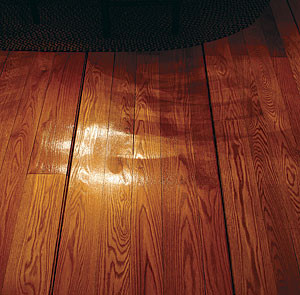
Wood floors are prone to movement. Installed correctly, floorboards hold tight to one another during humid times of the year and might reveal gaps during drier times. Abnormal gaps are generally the result of flooring that’s too wet when it is installed, but they also can be the consequence of installing flooring in areas of excessive dryness. I’ve worked on floors that had abnormal gaps because floorboards were installed directly over heating ducts, in areas that received a lot of sunlight, and in homes heated with woodstoves, which creates a dry interior environment.
Gaps are an aesthetic issue and should be repaired when they disrupt the overall look of a floor, not when they measure a particular width. I repair abnormal gaps during the most humid time of year, when they are at their smallest. If I repair gaps when they are at their widest, I might not leave sufficient clearance between floorboards and create a floor that buckles when it expands.
Also, I never use wood filler to repair gaps. Instead, I make a patch by gluing slivers of wood to the edges of the floorboards. I’m careful to apply glue to only one side of the sliver so that I don’t glue any boards together.
2. Cupping
When the bottom of a board is wetter than the top, its edges cup. Wide plank floors are more prone to cupping, but I’ve seen it happen to strip flooring as well.
Most often, cupping happens when flooring is installed over a wet basement or crawlspace. A vapor retarder installed between the subfloor and the floorboards can help the condition by slowing moisture migration, but it shouldn’t be relied on as a permanent solution to moisture problems. I use Aquabar “B” by Fortifiber (www.fortifiber.com) as a vapor retarder for strip flooring installed over conventionally framed floors. I use Bostik’s MVP (www.bostik-us.com) trowel-applied membrane when I’m laying floors over slabs and radiant-heating systems and when I’m installing wide plank flooring.
Some cupped floors lie flat once moisture issues are corrected. Other floors might be deformed permanently. A floor that doesn’t lie flat needs to be sanded, but only when the moisture content of the top and bottom of the boards is within 1%. I drive a moisture meter through the subfloor to check the bottoms of the boards. If you sand the peaked edges of a cupped floor too soon, you could have crowned boards when they’re fully dry.
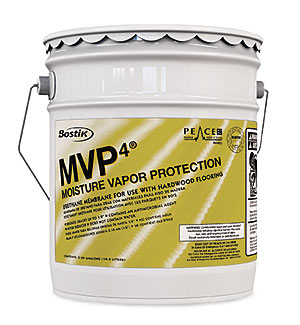 |
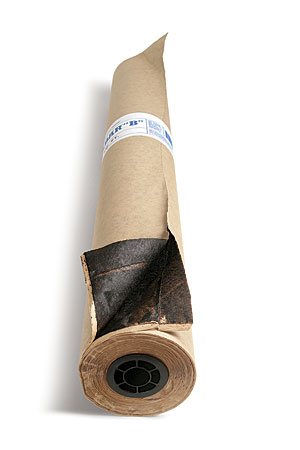 |
Moisture resistant, not moisture-proof. Aquabar “B,” which is composed of two layers of kraft paper laminated with asphalt, slows the movement of moisture through a subfloor, but it doesn’t stop it. An elastomeric membrane has similar characteristics, but is best used in glue-down flooring applications. Photos: Courtesy of Bostik
3. Buckling

When wood flooring becomes too moist, it can expand to the point that it lifts off the subfloor, moves door frames, and pops trim from the wall. A floor can buckle because of a damp basement, because of a flood, or because the floor was installed when it was too dry. In any case, the cause of buckling is always moisture, and improper fastening can aggravate the condition. Nails could be the wrong size or could be spaced too far apart. On glue-down installations, using the wrong size trowel can lead to a poor bond between the floorboards and the subfloor.
I’ve been able to refasten some buckled floors, but others had to be removed. I reuse floorboards when possible, but if the tongues and grooves are torn apart or if the boards are cracked, I replace them. I don’t repair buckled floors until the moisture issues in the home have been fixed and the moisture content of the floorboards and subfloor is at the appropriate level (see Acclimate a floor correctly at the end).
4. Peeling Finish
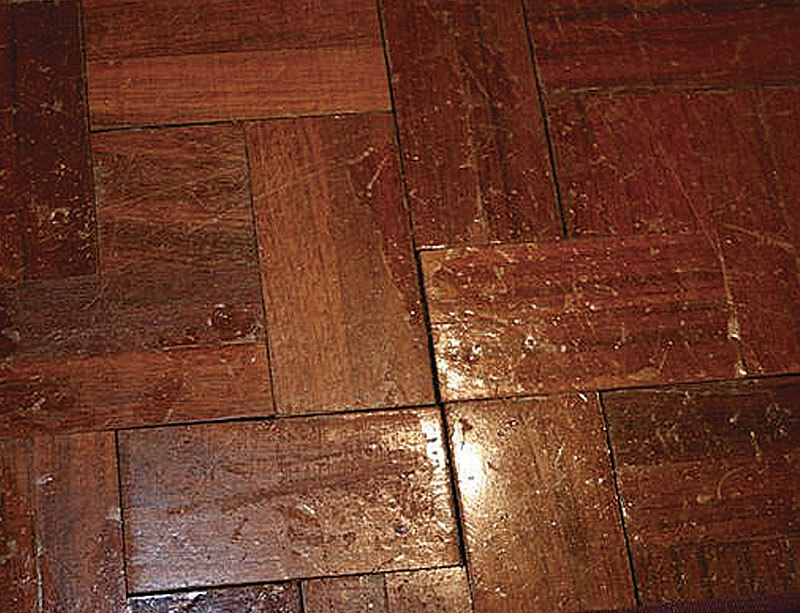
Floor finishes peel because the floor was contaminated or improperly prepped when the finish was applied. Excessive sanding with high-grit paper can burnish wood and create a surface too smooth for the finish to adhere. Inadequate abrading or cleaning between finish coats, applying a top coat over a floor that is not dry, or working with incompatible finishes all can cause peeling. However, the most common cause of peeling that I see is stain residue that isn’t cleaned from the floor prior to applying finish. To prevent a buildup of stain residue, I remove excess stain no later than three minutes after it was applied and let the floor dry thoroughly before applying the finish. I don’t apply multiple coats of stain or let stain sit in an attempt to darken wood.
The best way to fix a peeling floor is to sand it down to bare wood and restart the finishing process. Simply abrading the floor and applying a new top coat might not fix the problem. Without resanding, waxes, oils, and furniture polishes used to clean wood floors seep into the pores of the finish and can prevent the new finish from bonding successfully.
5. Excessive Wear
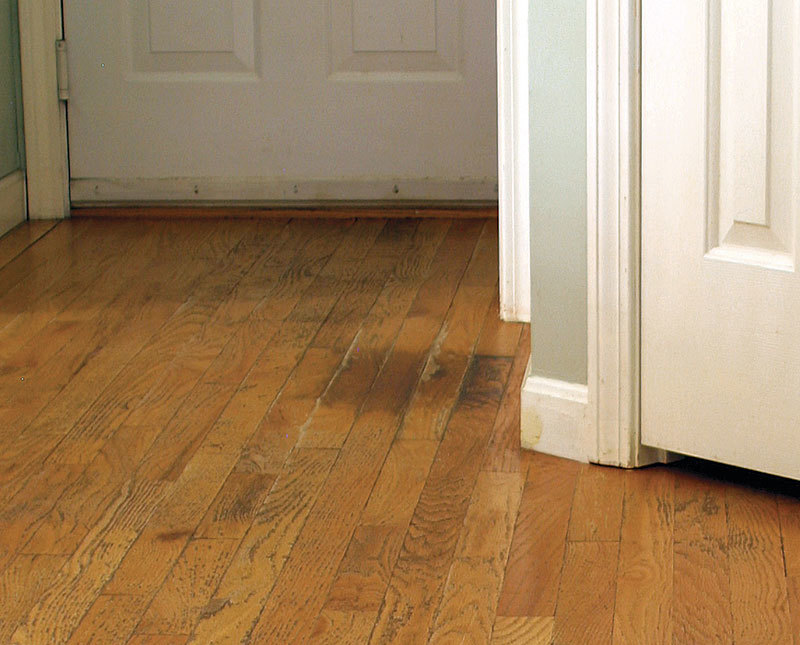
All wood floors eventually wear out, but when they’re in rough shape only a couple of years after being finished, something went wrong. Likely, the floor wasn’t sanded properly, the finish was built up too quickly, or the floor wasn’t maintained correctly.
On floors that are not sanded finely enough, the finish settles in the bottom of the sanding grooves, but the tops of the grooves are covered with little finish. When the floor is exposed to foot traffic, the surface breaks down. I sand bare boards to 100 grit or 120 grit, depending on the finish I’m using. In other cases, I’ve seen layers of finish built up too quickly. When multiple coats of finish are applied without proper drying time, it can take six months for the finish to cure. By that time, the floor looks like it has aged 10 years.
Even when sanded and finished properly, wood requires regular maintenance. Grit left on wood floors acts like sandpaper when walked on, and unclipped pet nails or unprotected furniture feet can scratch a finish considerably. At times, I’ve been able to recoat a slightly worn floor without sanding off all the old finish. But when a floor has lots of wear and deep scratches, it’s best to sand down the floor to bare wood and refinish it.
6. Debris in the Finish
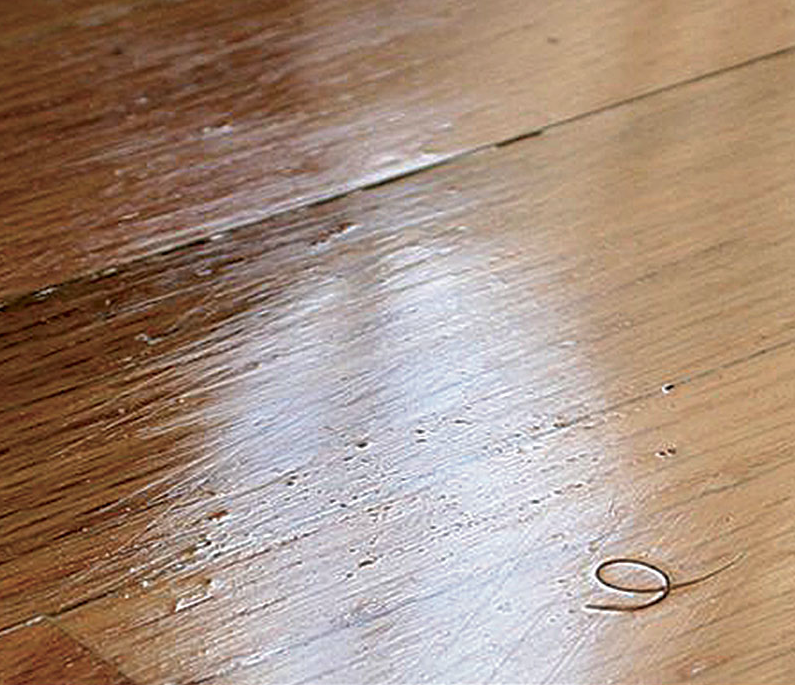
Wet finish acts like a large piece of flypaper. Any dust or animal hair that finds its way into it will be magnified once the finish is dry. To prevent debris from ruining the finish, I clean all the room’s surfaces prior to finishing the floor. I wipe down the walls and light fixtures. Then I vacuum the floor and go over it with a tack cloth. I never use tack cloths designed for use on cars, though. They can contain silicone, which compromises the finish. I also strain the finish and pour it into an applicator tray that I’ve lined with an insideout garbage bag. Last, I remove any loose fibers from the applicator by washing and vacuuming it thoroughly.
If debris does find its way into the finish, I make repairs by sanding the floor as I would between coats of finish and apply a new top coat on the floor.
7. Sanding Blemishes
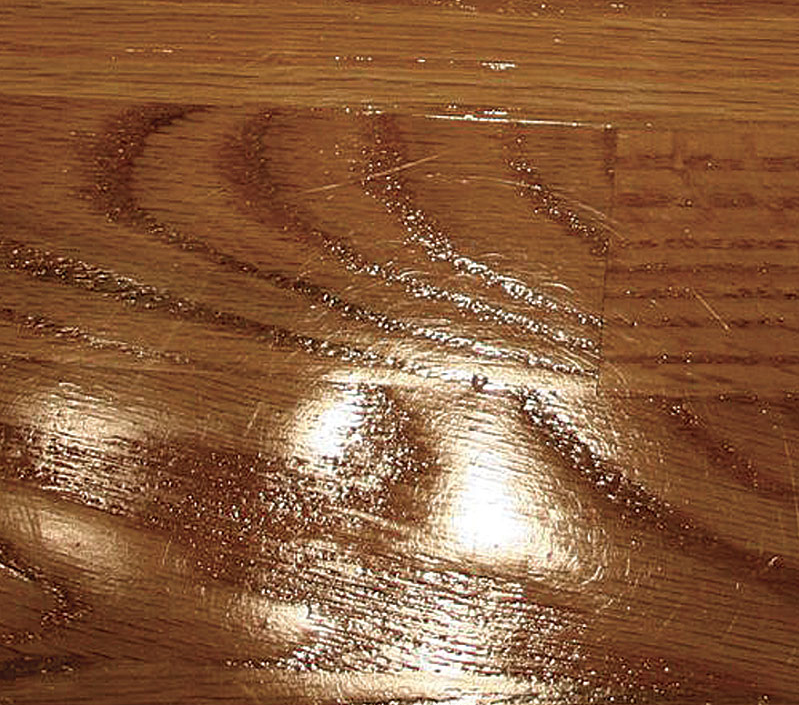
Worn abrasive screens or sanding pads used to sand between coats of finish can create unsightly scratches in the floor. Subsequent coats of finish magnify these imperfections.
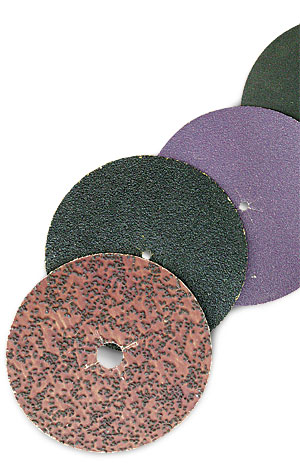
To remove the scratches, the finish needs to be sanded past the coat where the scratches were initially made. It’s often difficult to tell which coat of finish the scratches were created in, so I tend to sand off all the finish and start again.
To prevent these scratches, I use 3M abrasive pads when sanding between each finish coat. I find that these pads leave smaller, more plentiful, but less noticeable scratches. They also create a scratch pattern that promotes a much better adhesion between coats of finish. I like to use 150-grit to 180-grit pads when sanding oil-based polyurethanes and 220 grit when sanding between coats of water-based finishes.
8. Stains
Stains built up on a floor finish can usually be removed with a wood-floor cleaner (www.minwax.com), but stains in the actual finish must be sanded out. The most difficult stains to deal with are those that penetrate into the wood fibers. Pets are the most frequent culprit in creating these types of stains, but water can be equally damaging.
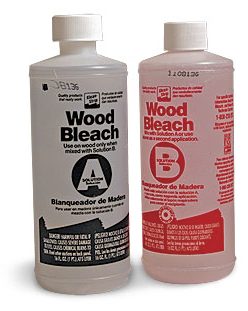 |
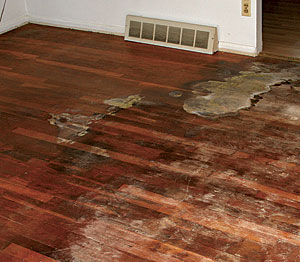 |
I usually recommend replacing floorboards that have been deeply stained, especially by pet urine. But I have had success using two-part wood bleach (www.kleanstrip.com) to remove stains.
This treatment has some drawbacks, though. Bleach tends to break down wood fibers, which increases the wood’s susceptibility to denting. Also, bleach isn’t guaranteed to lift the stains from the wood, which means the floorboards might still need to be replaced. Finally, the entire floor should be bleached, not just one area. This results in a lot more work, but helps to create a floor that is consistent in color and sheen.
Pet-stained floors can be saved. This floor can be fixed by brushing two-part wood bleach over the surface. The floor is neutralized after a couple of hours, then sanded and refinished when it’s dry.
9. Fractures
I see more cracks in factory-finished floors than in any other type of flooring. The finish on these boards is easily damaged by flooring nailers. Most manufacturers, however, now make adapters for their nailers to prevent the nailers’ force from concentrating on the surface of the floorboards. A board with a badly damaged edge should have been replaced when the damage occurred. If it wasn’t, I take the time to replace it. (See “New Life for an Old Floor”)
Cracks also can form on the face of factory-finished and regular floorboards. This damage is generally attributed to checks in the wood. Some wood species are more prone to cracking than others. Cracking also can be caused by the manufacturer. If the wood is dried too quickly in the kiln, it can crack.
Factory-finished boards can be fixed with a manufacturer repair kit, which typically consists of wood filler, colored marker, and a bottle of finish. If I can’t get a kit, I proceed the same way as I would with regular flooring. I replace the board, or I fill the crack with wood filler and apply a coat of finish over the entire floor so that colors, tones, and sheen match perfectly.
10. Poly Droplets
When small polyurethane droplets form along the edges of each floorboard, moisture is always to blame. The droplets are caused by polyurethane flowing into the gaps between floorboards while the floor is moving. The problem generally occurs when a floor is being finished during the change between dry and humid seasons. As the boards adjust to the climate, they expand, forcing any uncured polyurethane from the gap.
If caught in time, poly droplets can be removed with a razor blade, a rag, and floor cleaner. If a mess has already been made, either by walking on the droplets or by allowing them to cure, then each droplet needs to be cut off the floor by hand with a razor blade before the entire floor is abraded in preparation for a fresh top coat.
11. Irregular Floorboards
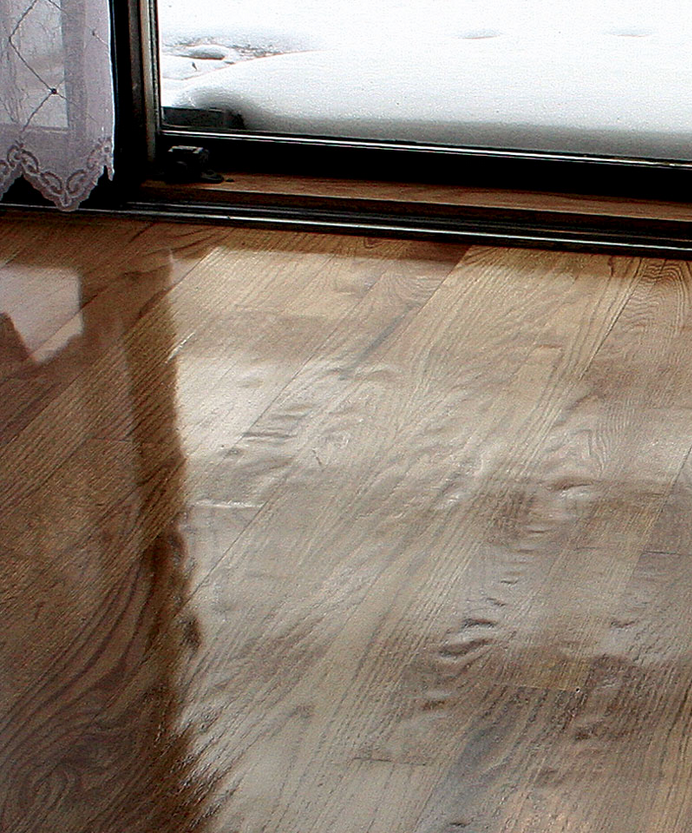
Dished-out deformities in floorboards are typically caused by poor sanding techniques or by heavy wear in spring wood. Spring wood, the part of the tree that grows quickly early in the season, has the least dense cell structure of any part of the tree. This wood is softer and less durable than the slower late-season growth, where cells are stacked more densely. Spring wood is easily misshapen by heavy foot traffic, sliding furniture, pets, and other daily household abuse.
Poorly maintained drum sanders, low-quality abrasives, or incorrect sanding also can create irregular floorboards. Drum sanders with damaged sanding belts, damaged fan belts, or worn-out wheels can create chatter marks on a floor. Chatter marks appear uniformly across the grain of each board and result in a floor that looks wavy.
Fortunately, I’ve never seen irregular floorboards that couldn’t be fixed. The floor needs to be flattened with a quality drum sander oriented at a slight angle to the boards; with a triplanetary sander, which has three orbiting heads; or with a buffer that has a hard-plate attachment. Of course, the floor will need to be refinished.
Rent the right sander
When it comes to creating a great-looking wood floor, nothing is as imperative as properly sanding the floorboards. Whether you’re trying to flatten a floor or simply abrade it for a fresh coat of finish, the sander you choose has a significant impact on the quality of the job.
The best rental sander (for the nonprofessional) that I’ve come across for all sanding applications is the four-headed random-orbit machine from U-Sand (www.u-sand.com). This sander is aggressive enough to take down floorboards, yet gentle enough for light abrading between finish coats. It also allows you to sand tight against walls, which eliminates having to rent an edger or hopping down on your knees with a sanding block. You don’t have to worry about orienting the sander with the grain or gouging the floor as you would with a drum sander, and a built-in dust-collection system improves both safety and performance.
The sander does have one major caveat. I’ve found that it isn’t tolerant of skipping more than one grit size per sanding step. If you skip grits, you’ll never get all the rough-sanding scratches out of the floor.
U-Sand machines can be rented from stores including True Value (www.truevalue.com), Grand Rental Station (www.grandrental.com), Taylor Rental (www.taylorrental.com), and The Home Depot (www.homedepot.com).
Foolproof operation, professional results. The four orbiting heads on the U-Sand rental machine can handle every aspect of floor sanding and eliminate the possibility of gouging the floor.
For more information, check out this video series on installing wood floors.
Click below to download a PDF of this article.
More on Wood Floors:
A Closer Look at Solid-Wood Flooring – The ins and outs of an enduring favorite.
Install Wood Flooring Series: Racking the Floor – Spread out all your flooring in advance to get even distributions of colors and textures.
Save Time With a Prefinished Wood Floor – Factory-finished products mean less work on site, but they demand a more careful installation.
A Faster, More Durable Floor Finish – Portable UV equipment yields a fully cured finish in seconds, not days.
Building Skills: Install a Subfloor – The subfloor is the layer of structural sheathing applied directly to the joists that provides a base for all the finish floors to come. Some types of flooring, such as carpet or traditional hardwood, can be installed directly on top of the subfloor.
Fix for a Scratched Wood Floor – Q: My house has continuous Brazilian cherry wood floors with no thresholds. They’re finished with three coats of polyurethane, but new scratches appear on a daily basis. Refinishing one floor …

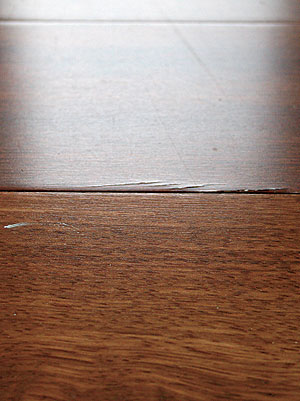
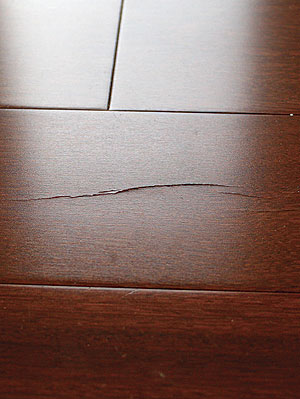

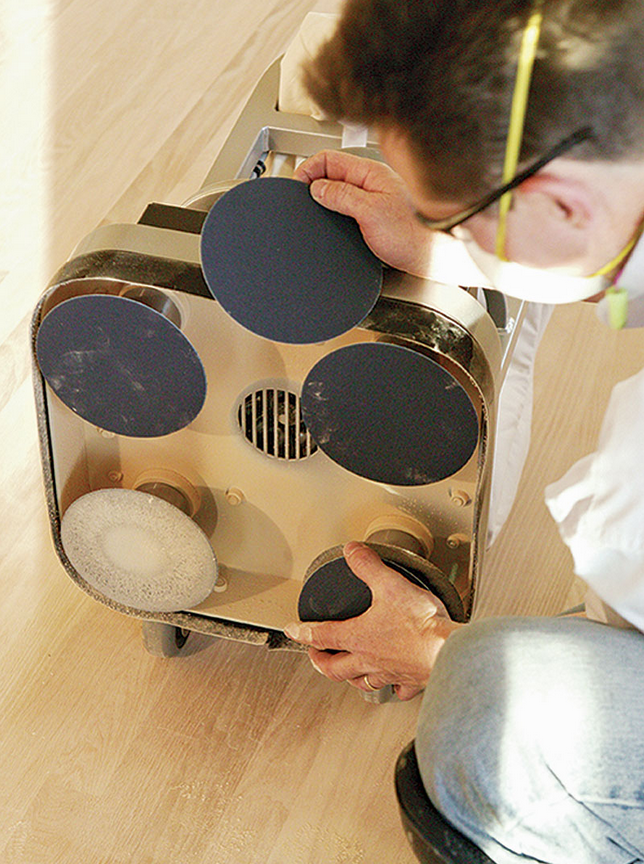












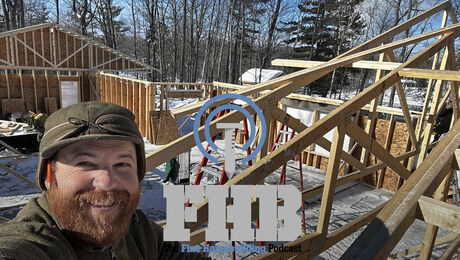


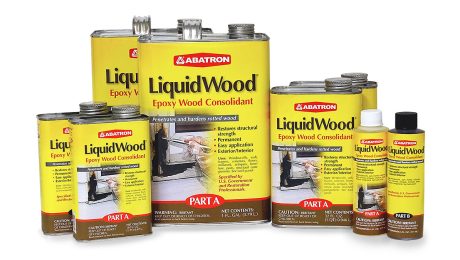










View Comments
Hello,
Great, no excellent article!
Searched high and low for hours, looking for valid information regarding filling gaps in floors with "slivers".
Read and watched dozens of hopefully well meaning individuals and companies espouse the virtues of their techniques and expertise...........
But something bothered me, hammering slivers of wood dipped or coated BOTH sides in glue didn't make sense, bonding 8 - 10 - 20 feet of wood planks edge to edge and not expecting a problem with expansion and contraction with normal seasonal humidity changes???
Thank you for your comprehensive, rational, ACCURATE discussion on this subject as a whole.
PS, after a bit of research regarding a contemplated DIY floor refinishing project, I concluded the U-Sand sander might be the best option for me, ie. someone inexperienced at floor sanding, and after having seen the results of professional and amateur results with belt and drum sanders, so I rented one at the local Home Depot, lucky for me they were wanting to sell the poor lonely, rarely used beast. $800, and they would apply the daily rental to the purchase price if I bought the unit.
Well I did after a few hours of getting a feel for the machine. It did the job, 1-1/2" thick, painted and cupped 120 year old pine floors, I did about 10 sq. ft. out of 4,000 sq. ft. The machine works exactly as you described, I've ordered about 600 discs starting at 24 grit up to 120, (not skipping a grit size per your advice)
Thanks again!
Great article. Thanks!